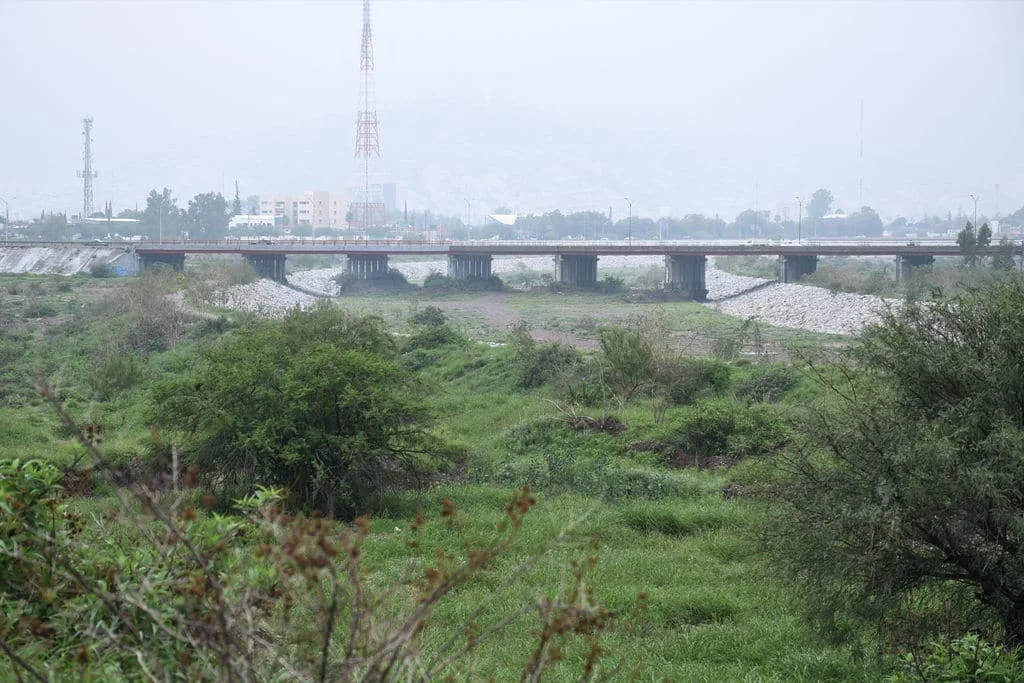 |
The Nazas River is a river in the interior of Mexico that flows through the states of Durango and Coahuila. It takes its name when the Spaniards of the conquest see the inhabitants of the river bank fishing with very peculiar baskets called "nazas", hence it was known as the "river of the nazas"
 |
| Nazas River Durango Mexico |
The Nazas River is born in the upper part of the Sierra Madre Occidental, to the east of the orographic shadow. Before the construction of the dams, it flowed into the Laguna de Mayrán , in Coahuila, after having traveled almost 600 km. 1 Currently this river is artificially slowed by the curtains of the "Lázaro Cárdenas" (El Palmito) dams , a capturing dam, and "Francisco Zarco" (Las Tórtolas), a diversion and regulating dam. These dams, together with the system of channels lined with concrete (concrete) in its lower basin, are responsible for the disappearance of the Great Mayrán Lagoon, a rare and unique ecosystem similar to the Okavango delta in Africa or the lake complexes of the Amu Darya and Syr Darya rivers that flow into the also drained Aral Sea in the former Soviet Union.
 |
| Nazas River Durango Mexico |
The Nazas River contains unique species, communities and ecosystems, a product of the isolation experienced by being a desert river. A population close to one and a half million inhabitants benefits from the ecosystem or environmental services of the Nazas River. Among the benefited communities are the cities of Rodeo, Nazas, Ciudad Lerdo and Gómez Palacio in Durango and Torreón, Matamoros, Francisco I. Madero and San Pedro de las Colonias in Coahuila. in it he grants species such as fish, algae and crustaceans.
 |
| Nazas River Durango Mexico |
Currently the ecosystems of the Nazas are in serious danger due to the overexploitation of its waters by agriculture, mainly dedicated to the production of forages for dairy cattle. The Nazas River has a protected natural area, the «Fernández Canyon State Park» located in the municipality of Lerdo. The Fernández Canyon is an important biological corridor for hundreds of species of amphibians, reptiles, birds and mammals. In its channel you can find ahuehuetes or sabines (Taxodium mucronatum) of more than 1300 years of age.
History of Nazas River
In 1598, the Mission of the Five Gentlemen of the River of the Nasas was founded on the banks of the river, by Fray Agustín de Espinoza, a Jesuit priest. Years later, in 1867, the name of Cinco Señores was changed to Nazas, thus the municipality of Nazas, Durango (Mexico) was renamed.
 |
| Nazas River Durango Mexico |
The Nazas River, through its channel and the recharge of the aquifer that feeds the region, made possible the establishment of the Lagunera Region as an agricultural area. In fact, the social and political importance of the Nazas was the reason for the generation of various disputes between the landowners of the region during the nineteenth century for the rights and benefits of irrigation water.
 |
| Nazas River Durango Mexico |
Today, the aquifer fed by the Nazas River is what has made possible the consolidation of the area as the most important dairy basin in Mexico.
Since the construction of the dams, the Nazas River in its lower part has only carried water on a few occasions: the most famous for its dimensions were in 1928 and later, in 1968, when it caused a flood of important proportions in the region of the Comarca Lagunera, which forced the intervention of the Mexican Army to evacuate some areas of the region.
 |
| Nazas River Durango Mexico |
In 1991 the dry bed of the river received water even more control and October to September of 2008 he again received water, which lasted in the channel approximately 45 days (in this important material damage were recorded on the bank of the river that runs through populated areas), and the last avenue was in August 2010.
 |
| Nazas River Durango Mexico |
Since the river is controlled by the Francisco Zarco (Las Tortolas) and Lázaro Cárdenas (El Palmito) dams, the river has had 4 avenues in the urban area of the lagoon region.

